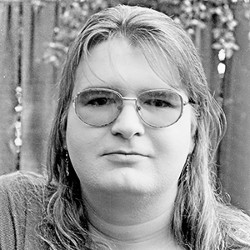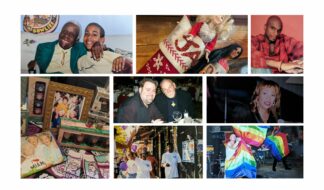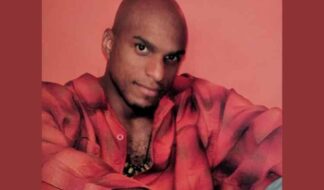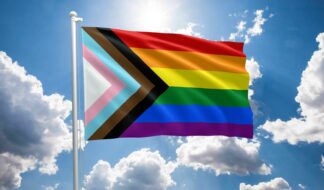by Gwendolyn Ann Smith

When I was still in the process of coming out, I found that one of the friends who seemed to have the hardest time dealing with my transition was the one who had come out just a year or two earlier as gay. This baffled me, as I had naively assumed he would be one of my bigger supporters.
As it turned out, I quickly learned one of the reasons for his reluctance. For him, part of his coming out included a concern that his existing friends and family would seem him as effeminate or unmanly, or perhaps expect him to suddenly take to drag performing around the house. For him, it was important, in one way or another, to push back against my identity for fear of how that would affect his identity.
The same can be true for transgender people, too. The same books I was reading about coming out at that time stressed letting people know that just because you identified as transgender did not mean you were gay as well, as if being such was an even worse horror to foist on your Aunt Connie than merely one's trans identity.
I came out a couple of decades ago, but this remains an uneasy border even now.
Several months back, at a speaking engagement for the Transgender Day of Remembrance, I was pulled aside from a member of the Sisters of Perpetual Indulgence. The sister in question, with a tightly trimmed beard framed with the signature white makeup, as well as their full habit and wimple, spoke to me alongside a busy road in hushed tones.
They saw the Transgender Day of Remembrance as an important day, but had found it difficult to explain to others in the area. Yes, they understood the importance of speaking out against these murders and honoring those lost, but they did not know how to explain to others why these others – presumed to be non-transgender gays, lesbians, and bisexuals – why the fight for transgender people mattered to them.
This discussion stayed heavy in my mind for the rest of my time at the event, and is something I've pondered a lot over time.
On the surface, yes, it may well be hard to see a similarity. First and foremost, the "G," "L," and "B" parts of the equation are far more concerned with sexual orientation. They are the parts of a movement that champions the rights of those who want to be in a relationship with a person of the same gender or, in the case of bisexuality, with either of the dominant genders. Or, in the case of the latter, perhaps more than simply two genders – but I'm getting ahead of myself.
The "T" in the equation, however, is more involved with gender identity and expression, and seems less of a fit than the others. This is, however, too simple of a worldview.
I think we belong together, unified with other sexual and gender minorities. We are stronger together as a coalition, rather than scattered into smaller and smaller subsets, unable to find common ground like some queer tower of Babel. I've always been a believer in working together on common causes, and supporting each other during those times when one or another of us needs support. It's what I expect in a community. I also know my views are excessively optimistic, and we're unlikely to make a perfect harmony of voices – but we can try.
Beyond this simple plea for an effective, beneficial community, I think there are more things that bind us together. Yes, trans identities are not on the surface the same as gay, lesbian, or bisexual ones – but we do cross over on expression. It may seem a radical approach, but I often look at gay and lesbian identities as being closer to a subset of trans, much more than the opposite.
Consider again my friend from high school. The concerns he pushed back against were not about whom he chose as a sexual partner, but about how his masculinity would be impacted when he came out as gay. That seems to me to clearly fall in the realm of gender expression far more than sexual orientation. By that same token, I could have pointed out to the member of the Sisters of Perpetual Indulgence who pulled me aside that they were, at that very moment, transcending gender, presenting in traditionally feminine garb while also sporting male facial hair. They were, indeed, transcending gender far more than I was in the time, presenting traditionally female, albeit it in women's slacks and a simple blouse and jacket combo.
There's truth to this union from our side as well. While many trans people may not identify in a more, shall we say, traditional sense as "gay" or "lesbian," surely our gender expression muddies the waters of gender, and that can further affect the sexual identity of a trans person as well as those who may have a sexual relationship with us. This becomes even more complex and obvious as the trans community blazes new, non-binary and other trails.
It's also worth noting that the arguments of so-called "transgender panic" defense around trans deaths are ones where trans identities and sexual orientation are tightly wound. Those who kill us often claim to do so because their masculinity was threatened, and they worried that someone might think they were homosexual.
This, to me, is why the fight for trans people sits firmly alongside our gay, lesbian, and bisexual siblings, and it is why we should learn from each other, grow together, and be ready and willing to stand up for each other.










